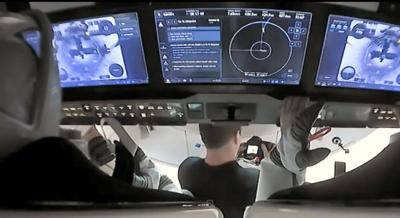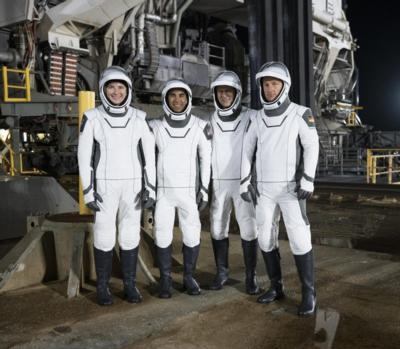'SpaceX Crew Transportation System Is The Only One Certified To Meet NASA’s Safety Requirements'
NASA intends to issue a sole source modification to SpaceX to acquire up to three additional crew flights to the International Space Station as part of its Commercial Crew Transportation Capabilities (CCtCap) contract. The additional crew flights allow NASA to maintain an uninterrupted U.S. capability for human access to the space station.

In October, NASA issued a request for information from American industry capable of providing safe, reliable, and cost-effective human space transportation services to and from the International Space Station to ensure a continuous human presence aboard the microgravity laboratory.
After a thorough review of the near-term certified capabilities and responses from American industry, NASA’s assessment is that the SpaceX crew transportation system is the only one certified to meet NASA’s safety requirements to transport crew to the space station, and to maintain the agency’s obligation to its international partners in the needed timeframe.
“It’s critical we begin to secure additional flights to the space station now so we are ready as these missions are needed to maintain a U.S. presence on station,” said Kathy Lueders, associate administrator, NASA’s Space Operations Mission Directorate. “Our U.S. human launch capability is essential to our continued safe operations in orbit and to building our low-Earth orbit economy.”

NASA anticipates a potential need to use any additional flights as early as 2023 to maintain mission readiness. Securing additional flights now also allows NASA to continue working with Boeing on the development of the company’s CST-100 Starliner spacecraft, which also will fly NASA and international partner astronauts to and from the space station after completing its certification effort.
“NASA commends Boeing for its ongoing investigation of the oxidizer isolation valve issue that was discovered ahead of the planned uncrewed Orbital Flight Test-2 (OFT-2) mission to the International Space Station in August, prioritizing safety over schedule while working to solve this challenge,” said Phil McAlister, director, commercial spaceflight at NASA. “NASA and Boeing will provide additional updates on the status of Starliner’s next mission as we work through the investigation and verification efforts to determine root cause and effective vehicle remediation.”
NASA continues to have a need for two unique crew capabilities to ensure dissimilar redundancy, maintain safe space station operations, and allow each company to work through any unforeseen issues that could arise as private industry builds operational experience with these new systems. NASA’s plan is still to alternate missions between SpaceX and Boeing, once both are operational.

The current sole source modification does not preclude NASA from seeking additional contract modifications in the future for additional transportation services as needed.
NASA also is working to extend the life of the space station beyond 2024 to allow for a seamless transition to commercially operated, low-Earth orbit destinations and allow NASA to continue its vital scientific research to prepare for human exploration beyond low-Earth orbit to benefit life on Earth. NASA continues to anticipate a need for crew transportation into the foreseeable future as the agency enables a low-Earth orbit economy.
In 2014, NASA awarded the CCtCap contracts to Boeing and SpaceX through a public-private partnership as part of the agency’s Commercial Crew Program. Under CCtCap, NASA certifies that a provider’s space transportation system meets the agency’s requirements prior to flying missions with astronauts. After years of development, commercial crew systems have achieved or are nearing operational readiness for regular crewed missions, including providing a lifeboat capability, to the space station.
For more than 20 years, NASA has continuously had astronauts living and working aboard the International Space Station, advancing scientific knowledge and demonstrating new technologies, making research breakthroughs not possible on Earth. As a global endeavor, 249 people from 19 countries have visited the unique microgravity laboratory that has hosted more than 3,000 research and educational investigations from researchers in 109 countries and areas.
 Airbus Racer Helicopter Demonstrator First Flight Part of Clean Sky 2 Initiative
Airbus Racer Helicopter Demonstrator First Flight Part of Clean Sky 2 Initiative Diamond's Electric DA40 Finds Fans at Dübendorf
Diamond's Electric DA40 Finds Fans at Dübendorf ANN's Daily Aero-Term (04.23.24): Line Up And Wait (LUAW)
ANN's Daily Aero-Term (04.23.24): Line Up And Wait (LUAW) NTSB Final Report: Extra Flugzeugbau GMBH EA300/L
NTSB Final Report: Extra Flugzeugbau GMBH EA300/L Classic Aero-TV: 'Never Give Up' - Advice From Two of FedEx's Female Captains
Classic Aero-TV: 'Never Give Up' - Advice From Two of FedEx's Female Captains





